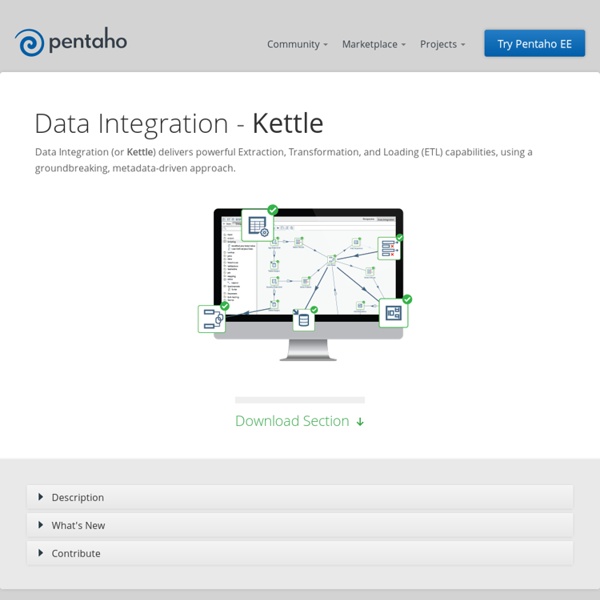Pentaho Community

Get the Source Code
Using the Project Repository Here you will find the live source control system that holds the Pentaho open source code, available to you with anonymous read access. The projects you can find in this repository are: The Pentaho BI platform, and all projects needed to debug within the PCI The Pentaho Design Studio The Pentaho Report Designer The Pentaho Report Design Wizard Pentaho Data integration (Kettle) Pentaho Report Engine (JFreeReport) Go to for instructions on how to get the Mondrian code. Getting the Source From Subversion We use Subversion as our source code control system. The following URLs are the locations for the various Pentaho projects available in the repository. Trunk - The latest code is in the trunk directory. Branches - Previously released versions are in subdirectories under the branches directory. Tags - Tagged versions of previous builds are located here. Projects Developing in the Pentaho Projects
Mondrian Documentation
Developer's Guide There are several ways to get Mondrian running. The easiest is to download a binary release, as described in the installation guide. But you can also build Mondrian from its source code. This document describes how to do that, how to learn about Mondrian's inner workings, and the guidelines you'll need to follow if you want to contribute to the Mondrian project. Getting the source code First, you need to get a copy of the source code. Download the latest release Download the latest mondrian-version.zip from SourceForge, and unzip. Clone the Github repository Download the Git client from Git. Clone the Git repository. $ git clone Cloning into 'mondrian'... remote: Counting objects: 51661, done. remote: Compressing objects: 100% (9979/9979), done. remote: Total 51661 (delta 37833), reused 51512 (delta 37691) Receiving objects: 100% (51661/51661), 294.25 MiB | 604 KiB/s, done. Building the code Setting up your environment Example output:
Druid | Real²time Exploratory Analytics on Large Datasets
Cube
Time Series Data Collection & Analysis Cube is a system for collecting timestamped events and deriving metrics. By collecting events rather than metrics, Cube lets you compute aggregate statistics post hoc. It also enables richer analysis, such as quantiles and histograms of arbitrary event sets. Cube is built on MongoDB and available under the Apache License on GitHub. Collecting Data An event in Cube is simply a JSON object with a type, time, and arbitrary data. Cube’s collector receives events and saves them to MongoDB. Querying Events Cube defines a simple language for querying events. You can intersect filters and customize which event fields are returned. request(browser).gt(duration, 250).lt(duration, 500) Cube supports both HTTP GET and WebSockets for retrieving events. Querying Metrics You can also use Cube to group events by time, map to derived values, and reduce to aggregate metrics. The first few results of which appear as: sum(request.eq(path, "/search")) sum(request(duration))
Palo.net - Open-Source BI
Related:
Related:



